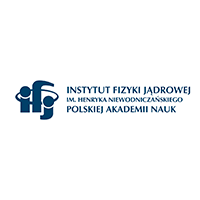(Henryk Niewodniczański. Institute of Nuclear Physics of the Polish Academy of Sciences)
-
TD 4 Space Systems Environments and Effects
-
TD 23 Electrical, Electronic and Electro-mechanical (EEE) Components and Quality
The Henryk Niewodniczański Institute of Nuclear Physics (IFJ PAN) is one of the largest institutes of the Polish Academy of Sciences, with an A+ ca-tegory in the group of sciences and engineering since 2014. The Institute conducts fundamental and applied research in the field of physics and rela-ted sciences. Using the latest achievements in technology and informatics at the IFJ PAN, research is conducted on the structure of matter and pro-perties of fundamental interactions from the cosmic scale to elementary particles. The results of our research are published annually in more than 600 reviewed articles in high-scoring scientific journals and in more than 100 other publications: monographs, conference proceedings and reports. Every year the Institute is an organiser or co-organiser of many internatio-nal and national scientific conferences and a number of seminars and other scientific meetings.
- Building Blocks (BB) sensors used in satellites and space probes.
- Electrical, electronic and electromechanical components.
- European Space Agency (ESA) Project Experiment Matroshka 2a and 2b: Measuring Radiation Hazards in Space. The experiment was based on long-term (2004-2009) measurements of cosmic radiation doses in anthropomorphic models of the human body on the International Space Station in Earth orbit. The results of the measurements allowed a reali-stic assessment of the radiation exposure of astronauts. An effect of the Matroshka project and its continuation are unique investigations that are the main scientific task of the planned first flight of the new American manned space vehicle Orion to the Moon orbit (Artemis-1 mission) at the end of 2021: „MARE – the Matroshka AstroRad Radiation Experiment”.
- DOSIS 3D experiment (from 2012 to present): Participation in the ESA „DOSIS 3D” experiment (participation funded by the NCN HARMONIA project „Spatial distribution of cosmic radiation dose on the International Space Station – DOSIS 3D” in 2013-2016). Measurements with thermo-luminescence and track detectors in the Columbus module of the Inter-national Space Station to determine the cosmic ray field and its variation in time.
- Space electronics irradiation: For the irradiation of space electronics, two sites at the cyclotron AIC-144 were adapted at the IFJ PAN. The first irradiation of elements of the Polish artificial satellite Hevelius was per-formed in 2012. In the following years, in the framework of radiation resistance tests of electronic systems designed for use in space, in a de-dicated site, proton beam irradiations were carried out for commercial companies.
http://ifj.edu.pl
E-mail:
dyrektor@ifj.edu.pl
Telephone:
+48 12 662 82 00
Address:
ul. Radzikowskiego 152, 31-342 Kraków
prof. dr hab. Bogdan Fornal
E-mail:
bogdan.fornal@ifj.edu.pl
Telephone:
+48 12 662 81 00







 Click to go back to the previous page
Click to go back to the previous page


